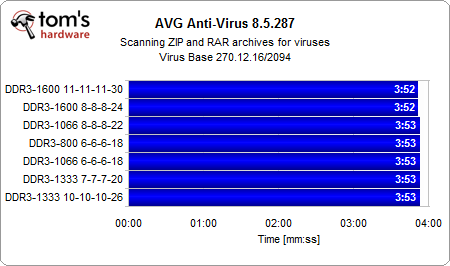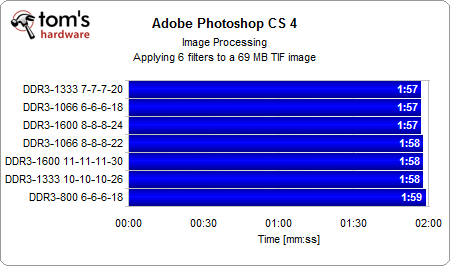DDR3 Memory Scaling: Intel's Core 2 Quad Examined
Results: Applications
The three second difference in more than three minutes of benchmark runtime is not sufficient to justify purchasing high-performance memory. That’s especially true given that there is no clear advantage for the fast memory configurations—the results seem random, and they’re already based on three test runs.
Once more: there’s no reason to go for faster memory, this time confirmed by AVG Anti Virus.
Fritz 11 is a chess application that manages to really stress multiple CPU cores, and it wants fast memory as well. High speed and low memory latencies are both important.
Adobe Photoshop users with Core 2 Quad systems should make sure they run low latency memory, as this yields the best benchmark results almost regardless of the memory clock speed.
Look at this: the performance difference between the slowest and the fastest memory under Adobe Premiere is significant. Users who do a lot of video editing clearly should go for high speed, low-latency DDR3 RAM on their Core 2 Quad system.
WinRAR also shows substantial benefits for the fast memory configurations, but this time, timings are much more important than clock speed.
WinZip is less impressed by faster memory, but both quick timings and fast memory speeds will give you some benefit.
Get Tom's Hardware's best news and in-depth reviews, straight to your inbox.
Current page: Results: Applications
Prev Page Results: 3DMark And 3D Games Next Page Results: Audio/Video Benchmarks





